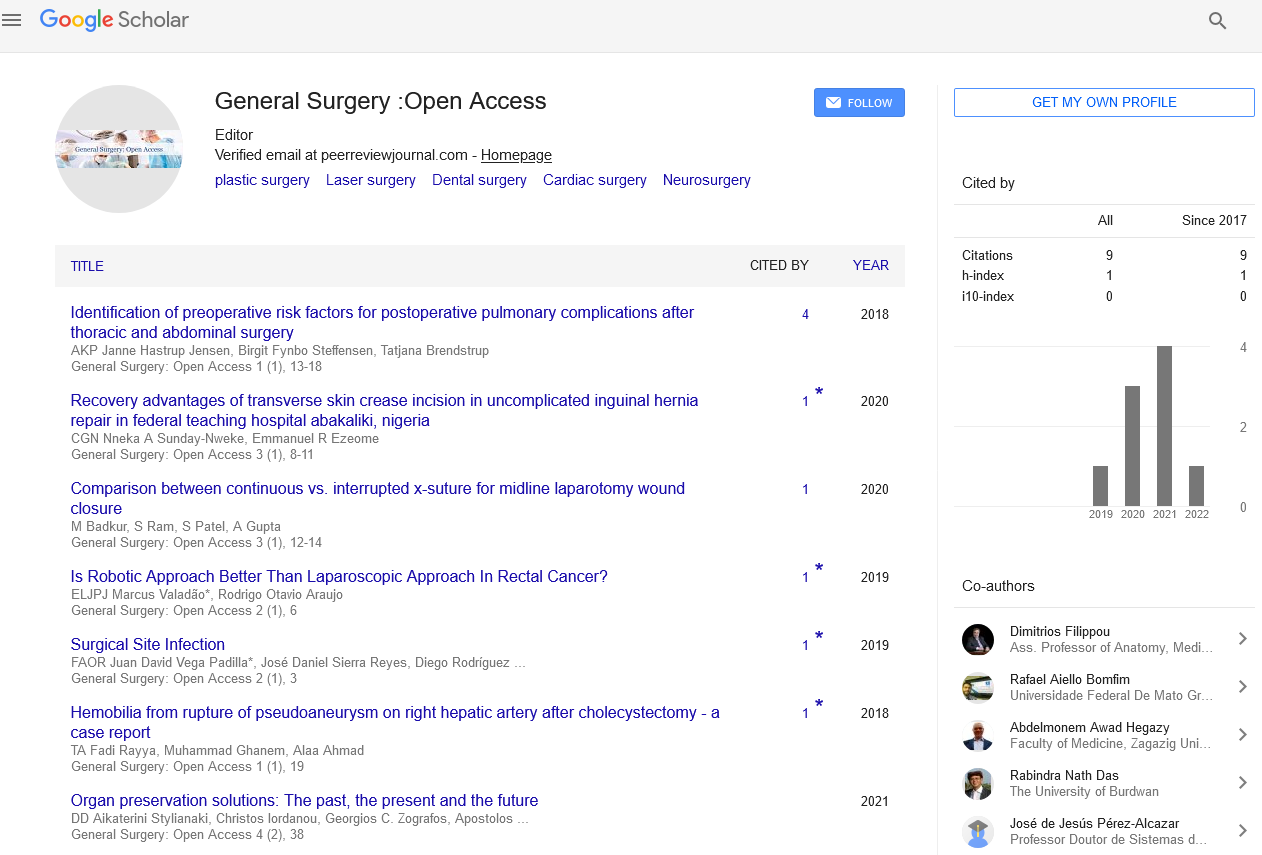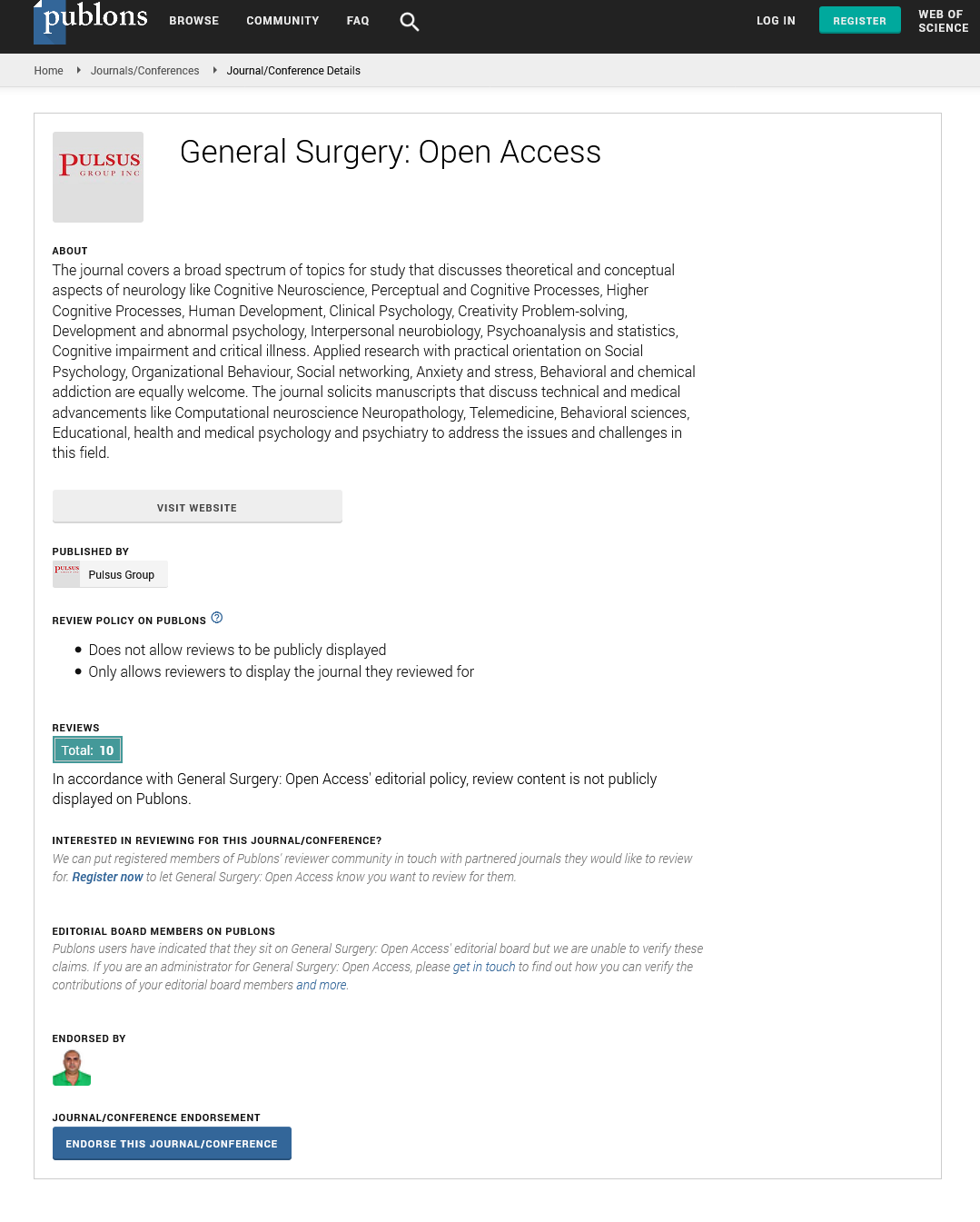Do Categorised Values Maximal Oxygen Uptake Discriminate Patterns of Exercise Dysfunction of Pectus Excavatum?
Received: 03-Dec-2021, Manuscript No. PULGSOA-22; Editor assigned: 08-Jan-2022, Pre QC No. PULGSOA-22(PQ); Accepted Date: Jan 05, 2022; Reviewed: 18-Dec-2021 QC No. PULGSOA-22(QC); Revised: 04-Jan-2022, Manuscript No. PULGSOA-22(R); Published: 14-Jan-2022, DOI: 10.37532/pulgsoa.2022.5(1)-01
This open-access article is distributed under the terms of the Creative Commons Attribution Non-Commercial License (CC BY-NC) (http://creativecommons.org/licenses/by-nc/4.0/), which permits reuse, distribution and reproduction of the article, provided that the original work is properly cited and the reuse is restricted to noncommercial purposes. For commercial reuse, contact reprints@pulsus.com
Abstract
Patients with Pectus Excavatum commonly report symptoms of compromised exercise function, yet cardiopulmonary function tests (CPET) fail to demonstrate a pathophysiological cause. As a result, patients in England are refused surgical treatment. We have examined whether categorised values of maximal oxygen consumption and other CPET parameters enable definition of exercise dysfunction. Results demonstrate that the analysis of categorised maximal oxygen consumption demonstrate that > 50% of patients with Pectus Excavatum experience compromised exercise function and >80% experiencing ventilatory dysfunction. Ventilatory dysfunction appears to be the primary cause of compromised cardiovascular function. Categorised data revealed that surgical treatment reduces exercise dysfunction by 40%, increasing the incidence of those with normal function by 90%. In conclusion use of CPET and pulmonary function tests require use of normal referenced and subgroup analysis to define physiological disturbances. This may improve access of patients with pectus to surgical treatment.
Biography
Satur is a Consultant Cardiothoracic in UK with a broad interest in the management of patients with malignant and benign thor acic diseases and major
thoracic trauma. I have developed protocols for the investigation of the exercise dysfunction caused by Pectus Excavatum and carinatum determine. This
group of patients have been disadvantaged by the view that their problems are largely cosmetic, and reports of exercise dysfunction are unfounded. We
are choosing to use this to redesign study protocols for evaluation of this group of patients, with the aim of facilitating improved treatment options for
them.






